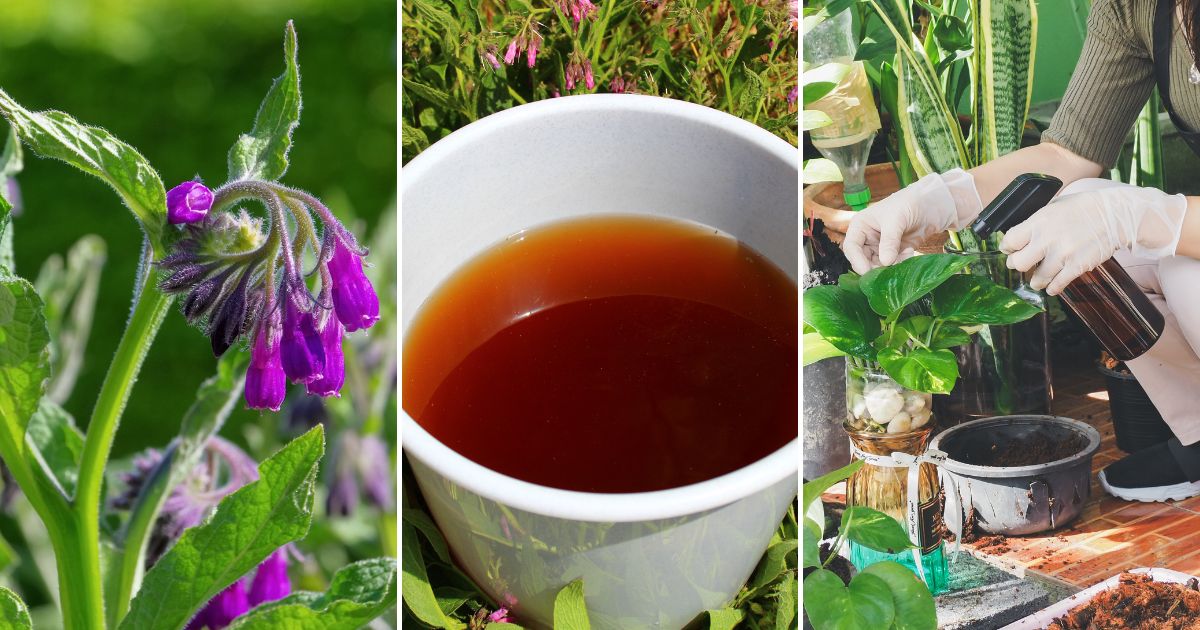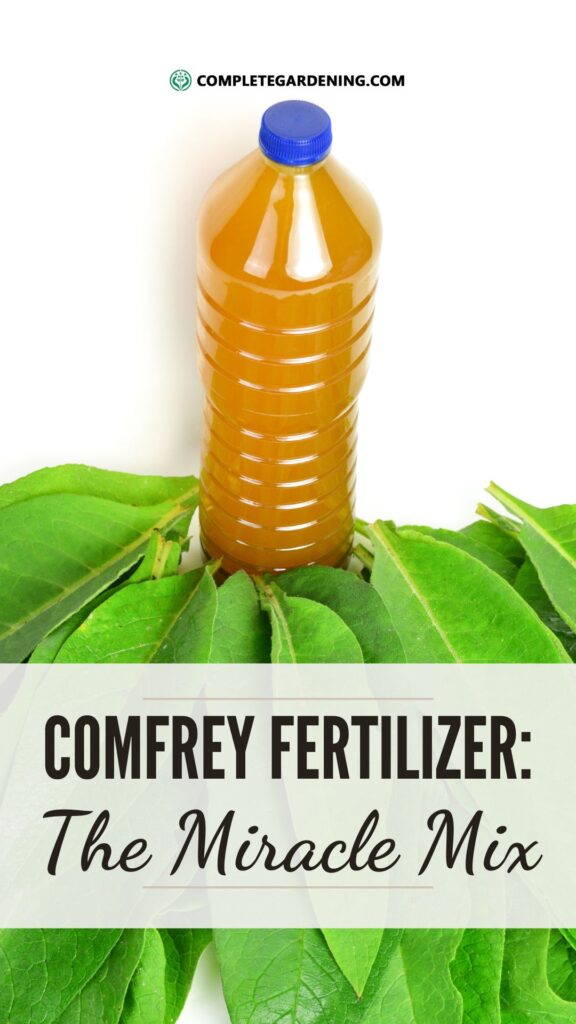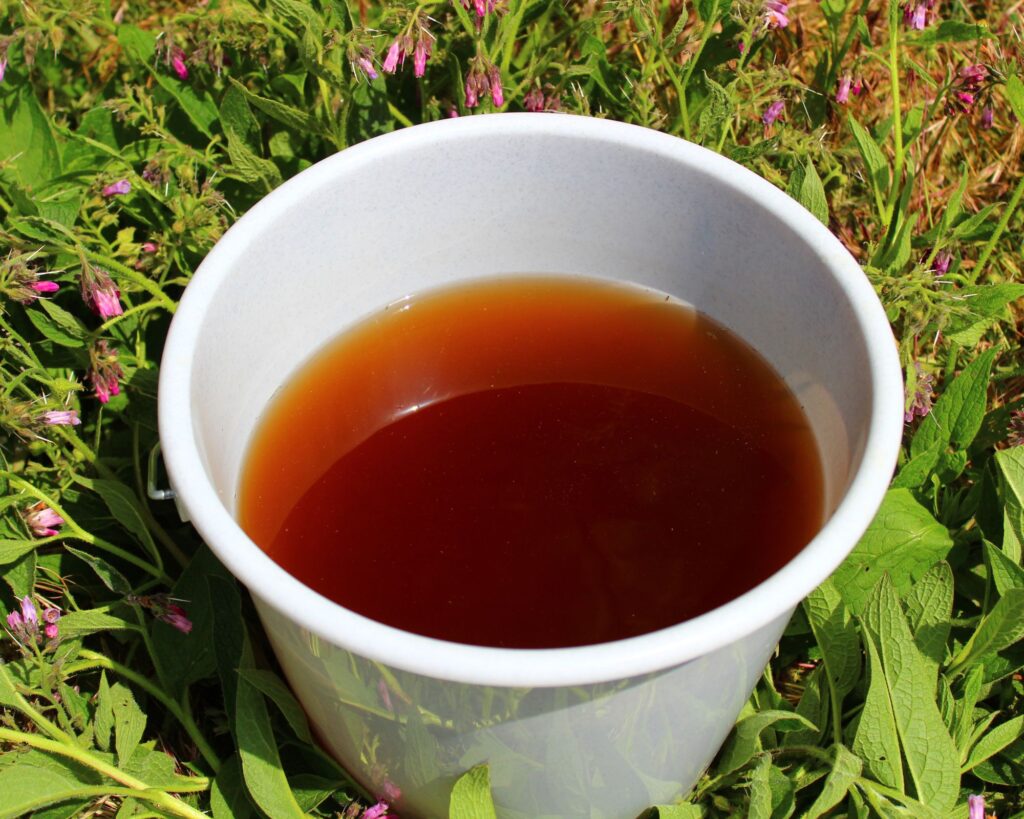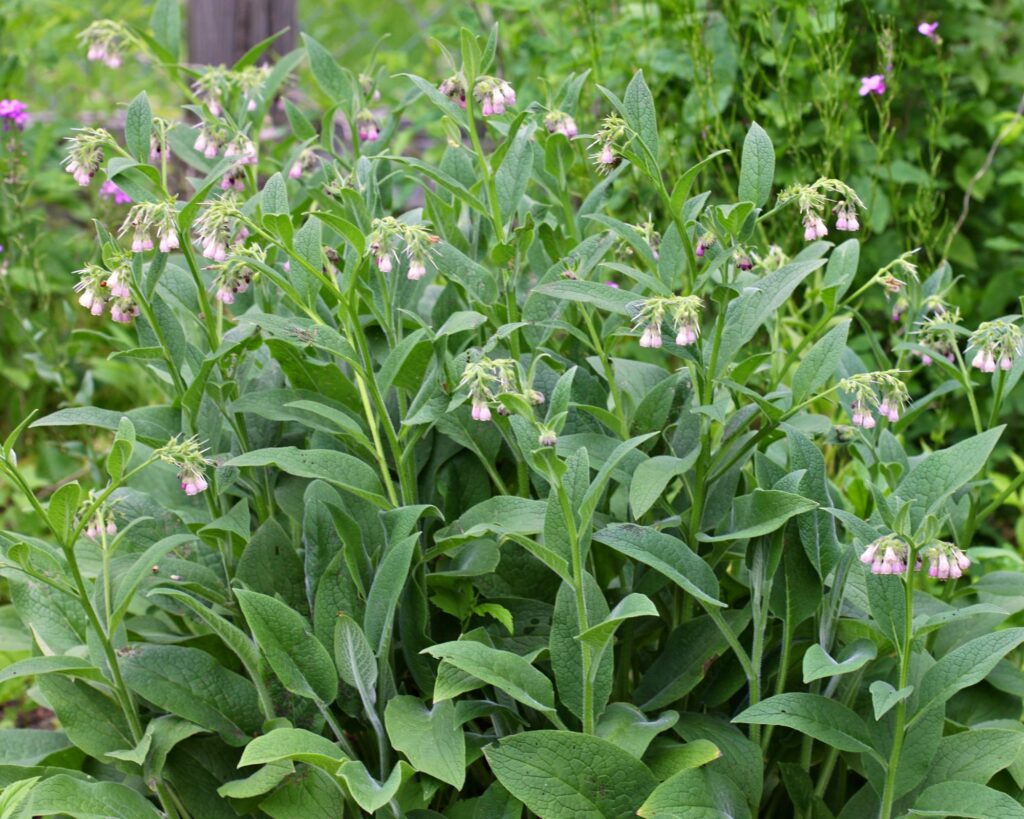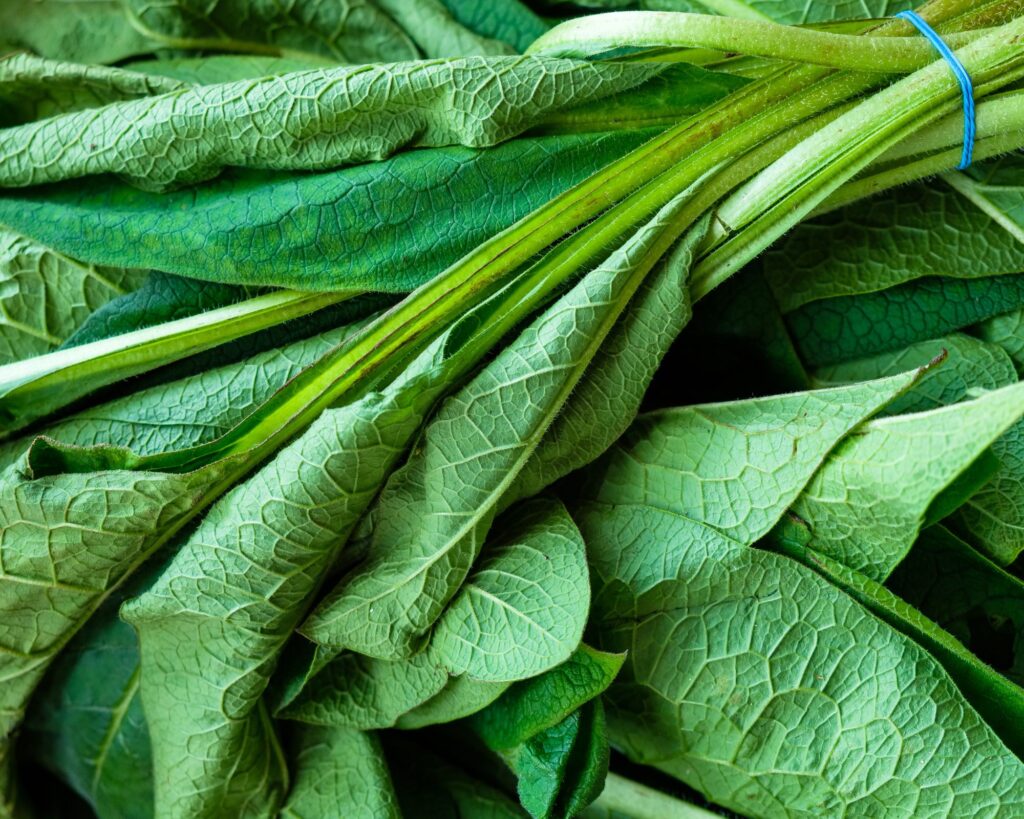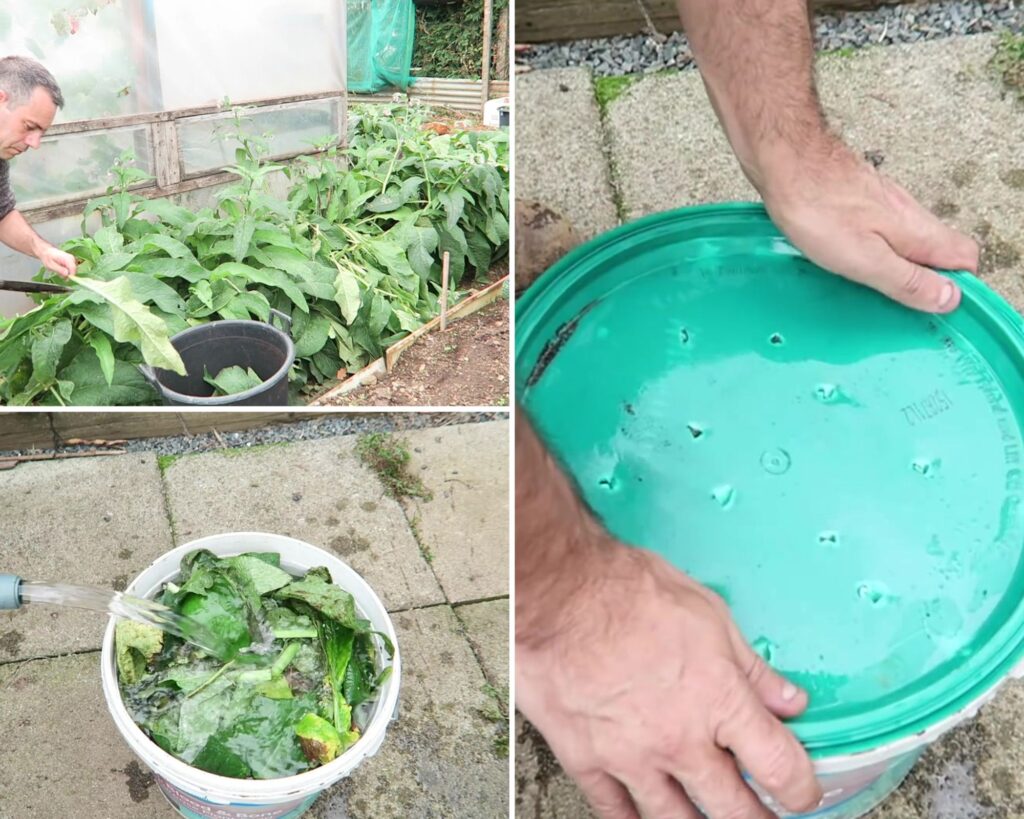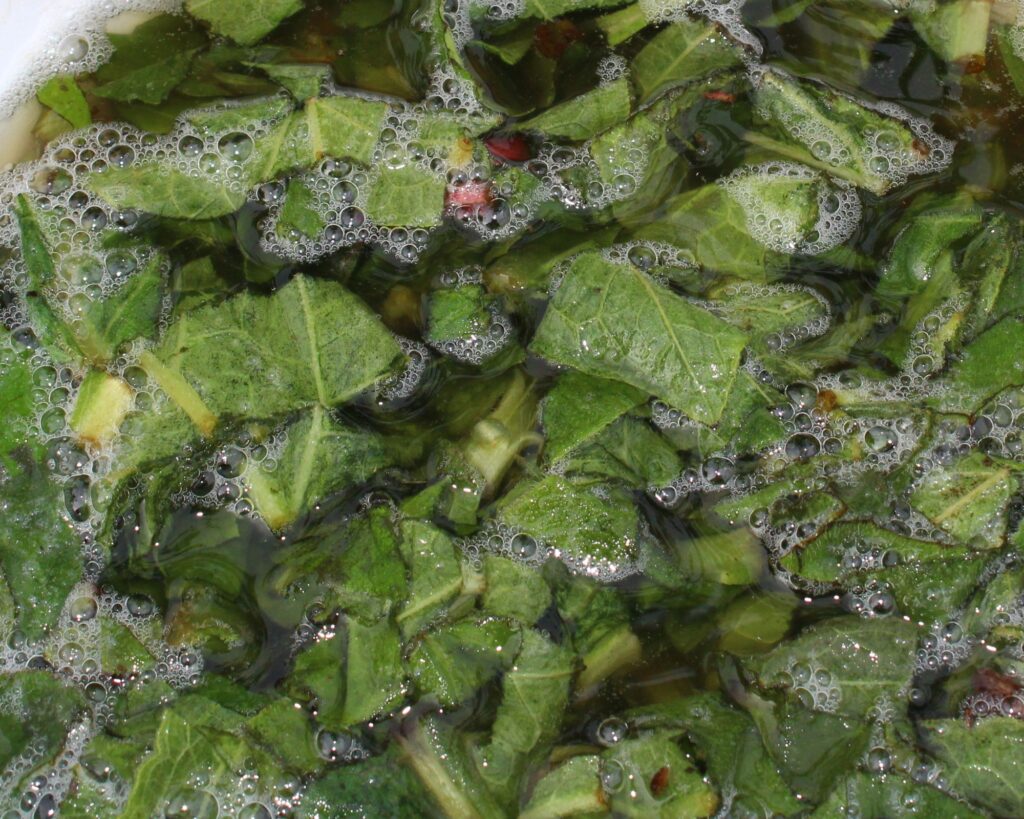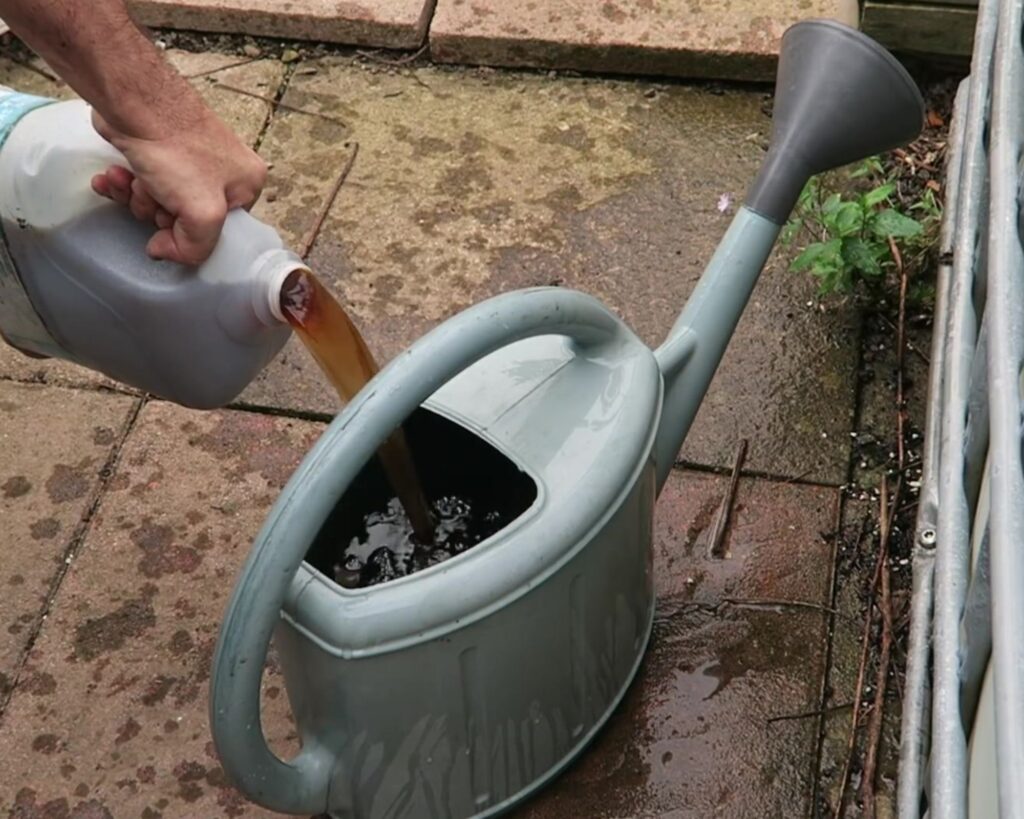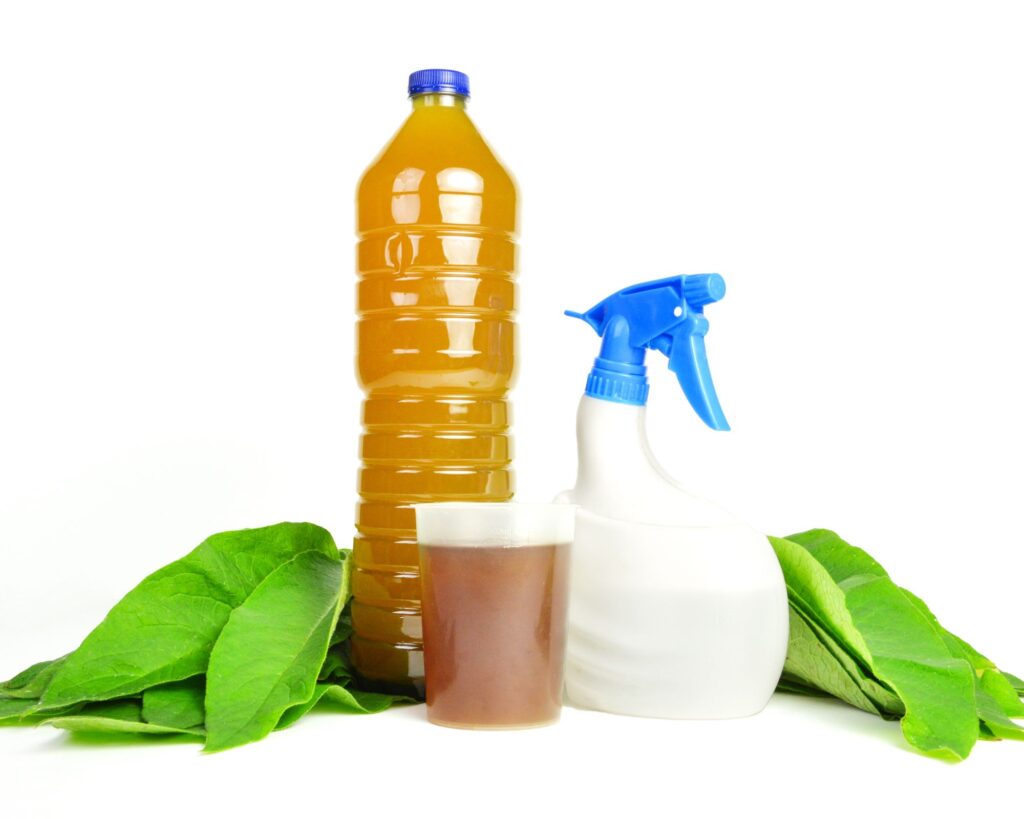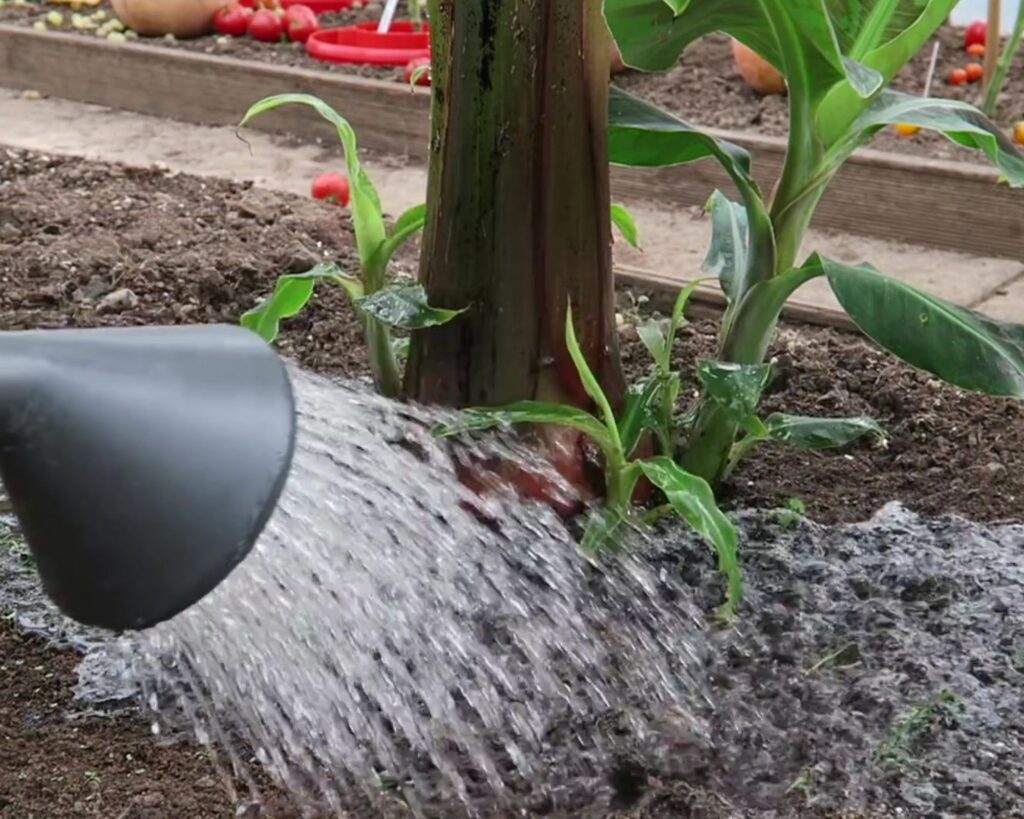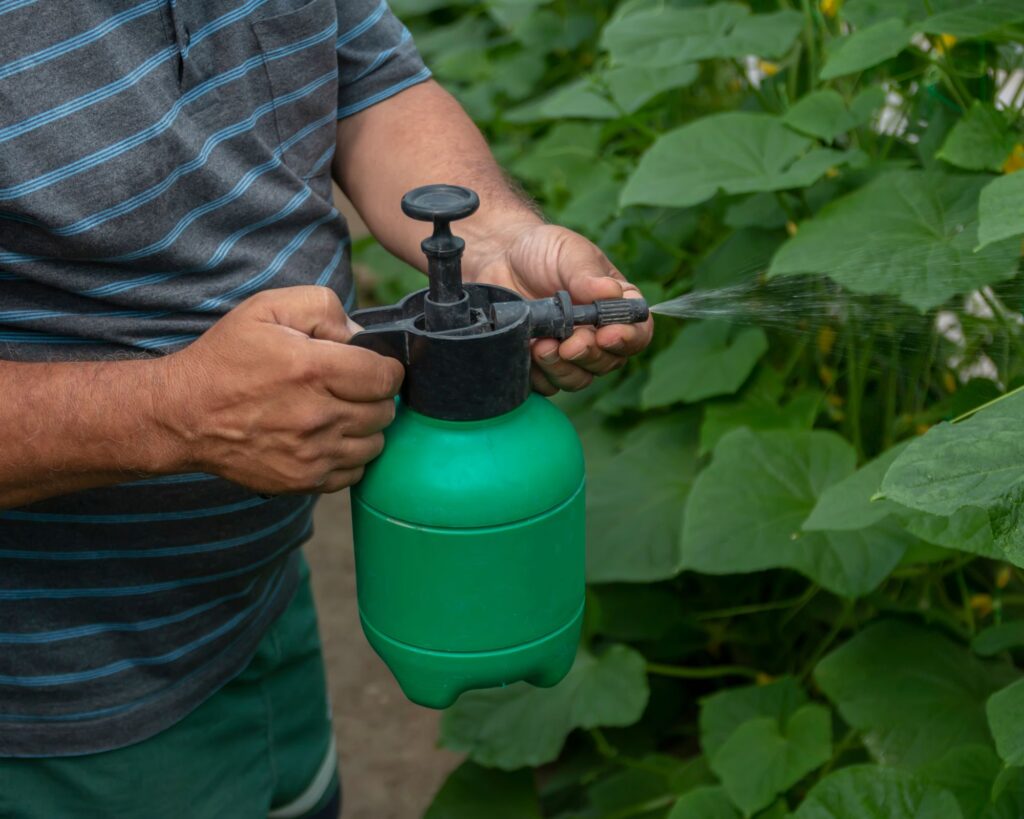If you’re passionate about organic gardening, you’ve likely heard of comfrey. This remarkable plant is not only a valuable companion in the garden, but it also serves as a powerhouse for natural fertilization.
Comfrey liquid fertilizer, often called comfrey tea, is an excellent way to boost the health of your plants without relying on synthetic chemicals. In this guide, we’ll delve into everything you need to know about making and using comfrey liquid fertilizer.
What is Comfrey?
Comfrey (Symphytum officinale) is a hardy perennial herb that has been used for centuries in traditional medicine and agriculture. It’s a fast-growing plant with large, hairy leaves and purple, pink, or white flowers that bloom in early summer.
What makes comfrey particularly special is its deep taproot, which can penetrate several feet into the soil. This allows the plant to access nutrients that other plants cannot, including potassium, nitrogen, phosphorus, and an array of micronutrients.
Why Use Comfrey as Fertilizer?
Comfrey leaves are incredibly rich in nutrients, making them an excellent source of natural fertilizer. Here’s why comfrey is so beneficial for your garden:
1. High Nutrient Content: Comfrey is particularly rich in potassium, which is essential for flower and fruit development. It also contains significant amounts of nitrogen and phosphorus, along with a range of trace minerals that are beneficial to plant growth.
2. Sustainable and Organic: Using comfrey as a fertilizer is a great way to keep your gardening practices organic and sustainable. Unlike synthetic fertilizers, comfrey liquid fertilizer enriches the soil over time without harmful chemicals.
3. Soil Conditioning: When used as a mulch or liquid fertilizer, comfrey helps improve soil structure, promotes healthy microbial activity, and enhances overall soil fertility.
4. Easy to Grow and Harvest: Comfrey is a low-maintenance plant that can be harvested multiple times throughout the growing season. It’s also resistant to pests and diseases, making it a reliable choice for organic gardeners.
Step-by-Step Guide to Making Comfrey Liquid Fertilizer
Making comfrey liquid fertilizer is a straightforward process, but it does require a bit of time and patience. Follow these steps to create your own potent comfrey tea:
1. Harvesting the Comfrey Leaves
The first step in making comfrey liquid fertilizer is to harvest the leaves. The best time to do this is just before the plant flowers when the leaves are at their most nutrient-rich.
Tools You’ll Need:
- Sharp knife or garden shears
- Gloves (comfrey leaves can be irritating to the skin)
- Bucket or container to collect the leaves
Harvesting Tips:
- Cut the leaves about 2-3 inches above the base of the plant.
- Try to harvest from multiple plants if possible to allow for regrowth.
- Avoid harvesting more than two-thirds of the plant at a time to ensure it can continue to thrive.
2. Preparing the Comfrey Leaves
Once you’ve harvested your comfrey leaves, you’ll need to prepare them for fermentation.
What You’ll Need:
- Large container with a lid (preferably plastic or ceramic)
- Heavy object (such as a rock or brick)
- Water
Instructions:
- Chop the comfrey leaves into smaller pieces to speed up the fermentation process.
- Place the chopped leaves into your container, packing them down as much as possible.
- Add a small amount of water to the container – just enough to moisten the leaves, not to cover them completely.
- Place a heavy object on top of the leaves to weigh them down. This helps to compress the leaves and encourages them to break down.
- Cover the container with a lid to keep out pests and reduce odors.
3. Fermenting the Comfrey
Now comes the waiting game. The leaves need to ferment to release their nutrients into the water, creating a rich, dark liquid.
Fermentation Time:
- Depending on the temperature and the amount of leaves, fermentation can take anywhere from 2 to 6 weeks. Warmer temperatures generally speed up the process.
Monitoring the Process:
- After about a week, you’ll notice the leaves starting to break down, and the liquid will begin to darken.
- Stir the mixture occasionally to help the process along and ensure even fermentation.
Signs of Readiness:
- The comfrey tea is ready when the leaves have fully broken down, and you’re left with a thick, dark liquid. The smell will be strong, but this is normal for fermented comfrey.
4. Straining the Fertilizer
Once your comfrey liquid fertilizer is fully fermented, it’s time to strain it.
What You’ll Need:
- Fine mesh sieve or old piece of cloth
- Second container for storing the liquid
- Funnel (optional)
Instructions:
- Pour the liquid through a sieve or cloth into a second container, separating the solid leaf matter from the liquid.
- Press down on the solids to extract as much liquid as possible.
- Discard the leftover solids in your compost bin – they’re still rich in nutrients and will benefit your compost pile.
5. Storing Your Comfrey Liquid Fertilizer
Proper storage is essential to keep your comfrey fertilizer effective.
Storage Tips:
- Store the liquid in a cool, dark place in a sealed container. This will help preserve its potency.
- Label the container with the date and contents, so you know how long it’s been stored.
- Comfrey liquid fertilizer can be stored for several months without losing its effectiveness.
How to Use Comfrey Liquid Fertilizer in Your Garden
Now that you’ve made your comfrey tea, it’s time to put it to use in your garden. Here are some ways you can use this powerful fertilizer:
1. Diluting the Fertilizer
Comfrey liquid fertilizer is very concentrated and should be diluted before use.
Dilution Ratio:
- A common dilution ratio is 1 part comfrey tea to 10 parts water. This will give you a balanced liquid feed that won’t overwhelm your plants.
2. Feeding Your Plants
Comfrey tea can be used as a general-purpose liquid fertilizer throughout your garden.
Application Tips:
- Apply the diluted comfrey tea directly to the soil around your plants. Avoid pouring it directly onto the foliage, as the strong liquid can sometimes cause leaf burn.
- Use comfrey tea every 2-4 weeks during the growing season to give your plants a nutrient boost.
- It’s particularly beneficial for fruiting and flowering plants, like tomatoes, peppers, and roses.
3. Using as a Foliar Feed
In addition to soil application, comfrey liquid fertilizer can be used as a foliar feed.
Instructions:
- Dilute the comfrey tea to a weaker solution (1 part comfrey tea to 20 parts water) for foliar feeding.
- Spray the diluted mixture onto the leaves of your plants in the early morning or late evening to avoid sunburn.
- Foliar feeding is especially useful for addressing nutrient deficiencies quickly.
4. Comfrey Tea as a Compost Activator
Comfrey tea can also be used to speed up the decomposition process in your compost pile.
How to Use:
- Add undiluted comfrey tea to your compost heap to accelerate the breakdown of organic materials.
- It’s particularly effective when added to a compost pile that’s rich in carbon materials, such as straw, leaves, or cardboard.
Benefits of Comfrey Liquid Fertilizer for Different Plants
Different plants can benefit from comfrey tea in various ways. Here’s how it can enhance the growth and health of specific plants in your garden:
- Tomatoes and Peppers: Comfrey tea’s high potassium content promotes flowering and fruiting, leading to larger and more abundant harvests.
- Root Vegetables: Nitrogen and phosphorus in comfrey tea help root vegetables like carrots and potatoes develop strong, healthy roots.
- Leafy Greens: Comfrey’s nutrient-rich liquid feed supports lush, green foliage in plants like spinach, kale, and lettuce.
- Flowering Plants: Roses, lilies, and other flowering plants benefit from comfrey tea’s balanced nutrient profile, leading to more vibrant blooms.
Common Questions About Comfrey Liquid Fertilizer
1. Can I Use Comfrey Tea on All Plants?
Comfrey tea is safe for most plants, but it’s especially beneficial for heavy feeders like tomatoes, cucumbers, and roses. However, it’s a good idea to test a small area before applying it widely, particularly on sensitive plants.
2. What if I Don’t Have Enough Comfrey?
If you don’t have enough comfrey leaves to make a large batch of liquid fertilizer, you can combine comfrey with other nutrient-rich plants like nettles or yarrow to make a mixed herbal tea.
3. Does Comfrey Liquid Fertilizer Attract Pests?
The strong smell of comfrey tea might attract certain insects, but once diluted and applied to the soil, it shouldn’t cause any pest issues. Always cover the container during fermentation to minimize odors.
Making comfrey liquid fertilizer is a rewarding and eco-friendly way to enhance your garden’s productivity. By following the steps outlined in this guide, you can create your own batch of nutrient-rich comfrey tea and enjoy the benefits it brings to your plants.
Whether you’re looking to boost flower production, increase fruit yields, or simply improve soil health, comfrey liquid fertilizer is a versatile and sustainable solution that every organic gardener should consider.
